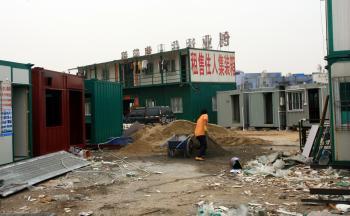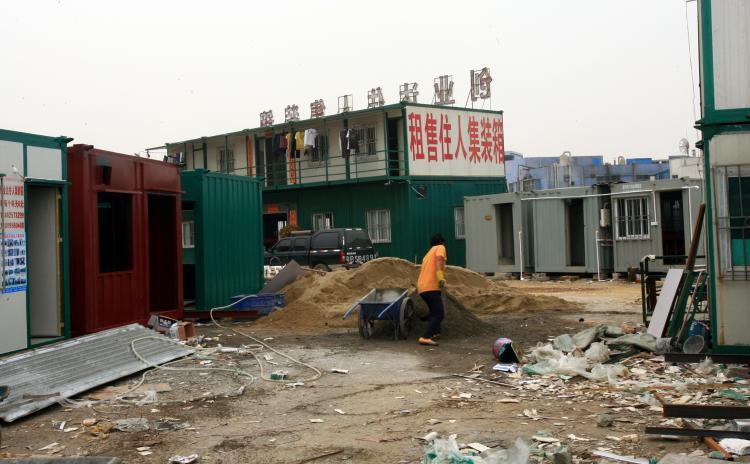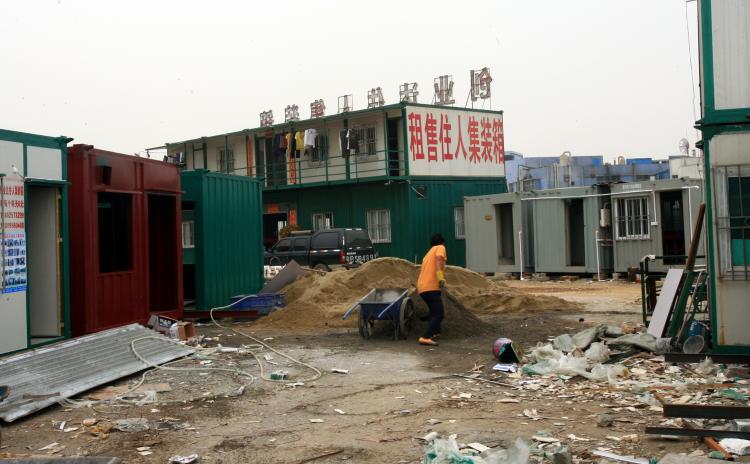Owning a conventional home has now become more and more unrealistic as local housing prices have grown much faster than many incomes. Even middle-class families find it difficult to afford housing.
The shipping containers, also known as intermodal containers, were once used exclusively for storing and shipping cargo, but now numerous ads touting their use as homes can be seen dotting roads to the east and west of Shenzhen City, according to a report in Guangzhou Daily on March 18.
The primary incentive for choosing a container house is the low cost: a 10 feet x 20 feet intermodal container can be rented for 6 yuan (US$0.88) per day, which adds up to only 180 yuan (US$26) a month, and 2,160 yuan (US$316) a year.
The container homes are frequently spotted in the woods, under bridges, beside construction sites, or near highways in Shenzhen as their owners, who often cannot obtain rights to land, know it is best to exercise caution toward city managers at all times. Residents usually go to work or school in the urban sectors. They return to their makeshift homes at night, often with the worry that they may be towed away while they are sleeping.
The average price of property in Shenzhen is now 20,000 yuan per square meter (approximately US$272 per square foot).
While the price of the intermodal containers is attractive, Mr. Wang Jilong, who has lived in an intermodal container with his son for seven years, said that one must live in one to understand the challenges it presents.
According to a report in the Economics Daily, Wang said he had purchased the container for 10,000 yuan (US$1,465) and rents the land.
His dream was to purchase a home when he first came to Shenzhen, but his income was too low to offset the increase in the price of housing. Because property rentals were also more than he could afford, he took up residence in an abandoned container that he found on a construction site.
With the current housing market as it is, it seems unlikely that Mr. Wang will relinquish his container home for a real one anytime soon.
Promising Future for Container-home Manufacturers
“Cargo shipping-container home developers” are now able to successfully compete in the housing market due to the high demand for low-cost housing, according to Mr. Zhang, who manages a company which manufactures the containers as housing.
As far as business opportunities in Shenzhen go, there seems to be a definite future for this latest mode of housing.
Real estate marketing-plan specialist Xie Yifeng remarked, The interest in “cargo shipping-container houses is the best indication of China’s high price of housing.”
Reports indicate that Shenzhen’s housing market has not been affected by price-control measures, and prices have only continued to soar; the price-to-income ratio far exceeds the international warning line.
According to Governor Huang Huahua of Guangzhou, “Housing prices in Guangzhou and Shenzhen have risen over 40 percent in December and January of this year.”
Read the original Chinese article.







Friends Read Free